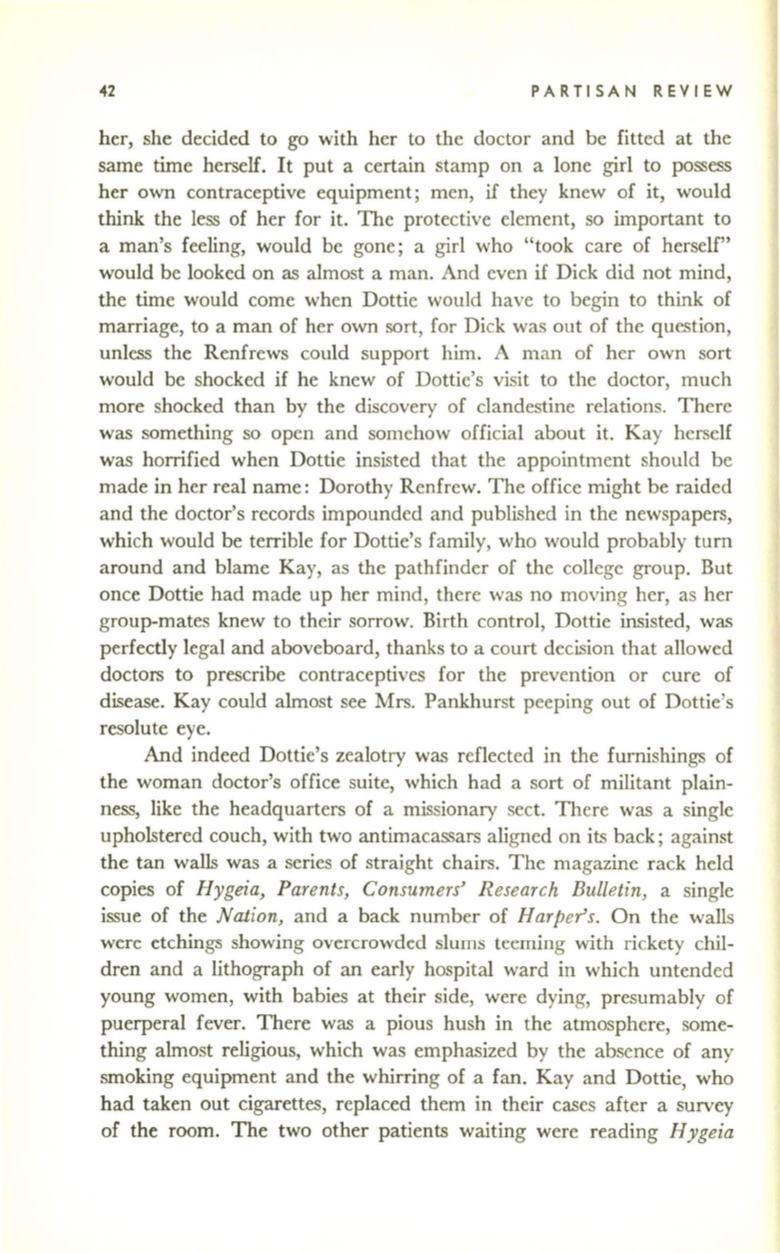
42
PARTISAN REVIEW
her, she decided to go with her to the doctor and be fitted at the
same time herself. It put a certain stamp on a lone girl to possess
her own contraceptive equipment; men,
if
they knew of it, would
think the less of her for it. The protective element, so important to
a man's feeling, would be gone; a girl who "took care of herself"
would be looked on as almost a man. And even if Dick did not mind,
the time would come when Dottie would have to begin to think of
marriage, to a man of her own sort, for Dick was out of the question,
unless the Renfrews could support him. A man of her own sort
would be shocked if he knew of Dottie's visit to the doctor, much
more shocked than by the discovery of clandestine relations. There
was something so open and somehow official about it. Kay herself
was horrified when Dottie insisted that the appointment should be
made in her real name: Dorothy Renfrew. The office might be raided
and the doctor's records impounded and published in the newspapers,
which would be terrible for Dottie's family, who would probably turn
around and blame Kay, as the pathfinder of the college group. But
once Dottie had made up her mind, there was no moving her, as her
group-mates knew to their sorrow. Birth control, Dottie insisted, was
perfectly legal and aboveboard, thanks to a court decision that allowed
doctors to prescribe contraceptives for the prevention or cure of
disease. Kay could almost see Mrs. Pankhurst peeping out of Dottie's
resolute eye.
And indeed Dottie's zealotry was reflected in the furnishings of
the woman doctor's office suite, which had a sort of militant plain–
ness, like the headquarters of a missionary sect. There was a single
upholstered couch, with two antimacassars aligned on its back; against
the tan walls was a series of straight chairs. The magazine rack held
copies of
Hygeia, Parents, Consumers' Research Bulletin,
a single
issue of the
Nation,
and a back number of
Harpers.
On the walls
were etchings showing overcrowded slums teeming with rickety chil–
dren and a lithograph of an early hospital ward in which untended
young women, with babies at their side, were dying, presumably of
puerperal fever. There was a pious hush in the atmosphere, some–
thing almost religious, which was emphasized by the absence of any
smoking equipment and the whirring of a fan. Kay and Dottie, who
had taken out cigarettes, replaced them in their cases after a survey
of the room. The two other patients waiting were reading
Hygeia


